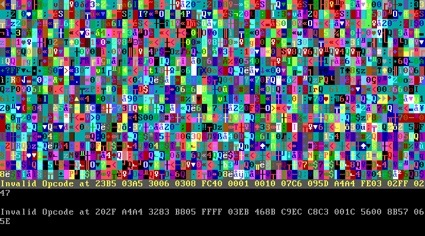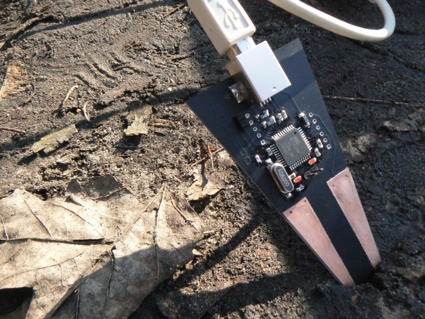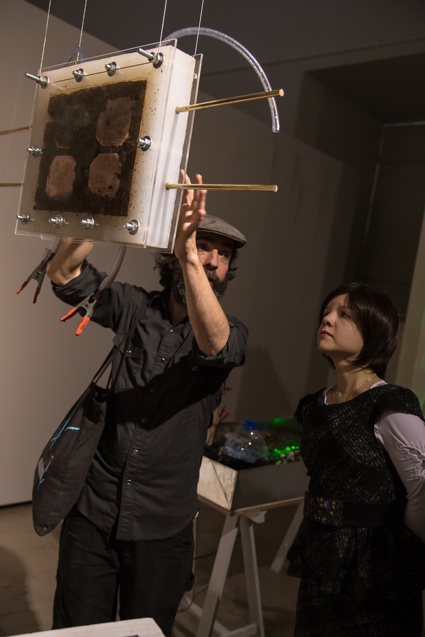 Sketches for an Earth Computer, installation view in Riga. Image courtesy of FIELDS
Sketches for an Earth Computer, installation view in Riga. Image courtesy of FIELDS
Yet another post about a work i discovered in RIga when i visited Fields – patterns of social, scientific, and technological transformations, a (fantastic and still open) exhibition featuring works by artists who have adopted an engaged, critical and active role in society.
Sketches for an Earth Computer is an ongoing series of living “laboratory” studies that explore the links between the earth, code and the human psyche of the viewer.
Over the past few years, Martin Howse has been investigating the possibility to build a computational device that would not only be constructed solely from the earth but would also be embedded within the earth as a critical monument to human technology.
The computer enters a feedback loop with the environment itself as geophysical, biological and electro-chemical elements can both encode and be modified by the computational structures.
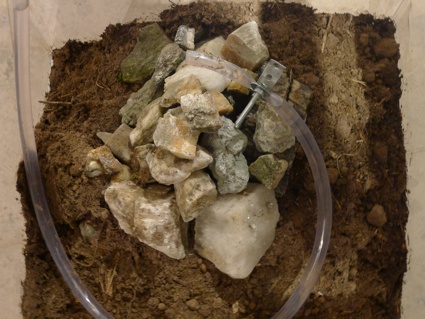 Sketches for an Earth Computer, installation view in Riga. Image courtesy of Martin Howse
Sketches for an Earth Computer, installation view in Riga. Image courtesy of Martin Howse
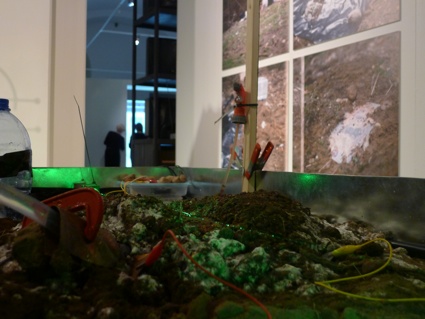 Sketches for an Earth Computer, installation view in Riga. Image courtesy of Martin Howse
Sketches for an Earth Computer, installation view in Riga. Image courtesy of Martin Howse
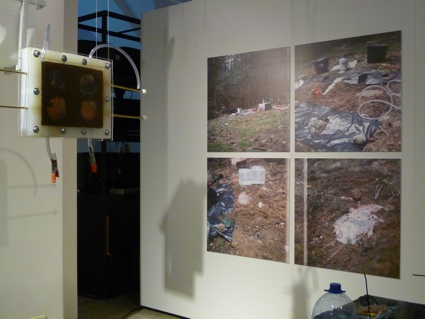 Sketches for an Earth Computer, installation view in Riga. Image courtesy of Martin Howse
Sketches for an Earth Computer, installation view in Riga. Image courtesy of Martin Howse
Questions to Martin Howse:
Hi Martin! Could you explain the setting of the installation at the FIELDS exhibition?
What each elements stands for? Its role in the system?
As background it’s important to understand that all of these elements are simply fragments of sketches towards the working out of what could be described an earth computer. The images in the background show elements of the installation operating within a forest environment in Germany. So the elements of the installation are designed as pointers towards these functional aspects of the earth computer, which may or may not operate correctly within an exhibition environment.
For example, the hanging sealed earth container references the potential recoding of electrochemical earth elements using a primitive solar cell constructed between copper, copper oxide plates and forest earth.
The large, floor-situated earth container (using forest earth dug one hour away from Riga in the “magic forest”, and gypsum from a nearby quarry), refers to potential chemical changes in the earth induced by water passing through this stack of minerals above the earth. At the same time all of these containers draw attention to the drawing of a boundary for the earth, and the disconnection from the deep forest setting for which the earth computer is intended.
The last, most complex earth computer demonstrates several parts of the earth computing system; a display based on early telegraphy technology, the mirror galvanometer, transduces and makes visible signals from the earth using a moving mirror, fixed coil and small laser light beam. This is the interface to the earth computer. Forest earth in this container is also seeded with oyster mushroom mycelium and doped with silver nitrate, attempting to form over time a processor for the earth computer.
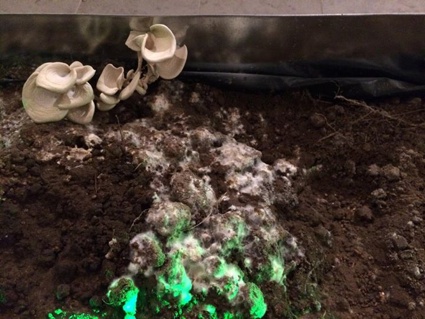 Sketches for an Earth Computer, installation view in Riga. Photo by RIXC, The Centre for New Media Culture
Sketches for an Earth Computer, installation view in Riga. Photo by RIXC, The Centre for New Media Culture
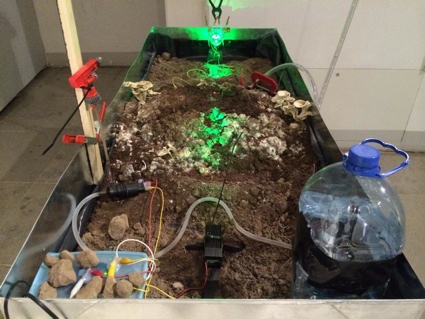 Sketches for an Earth Computer, installation view in Riga. Photo by RIXC, The Centre for New Media Culture
Sketches for an Earth Computer, installation view in Riga. Photo by RIXC, The Centre for New Media Culture
You developed an earthboot that ‘enables almost any computer to boot straight from the earth’. How reliable is the system exactly?
The system is far from reliable, given that the earth has no interest or intention in correctly coding an operating system. Most of the time the computer crashes silently; a blank unresponsive interface. In perhaps one out of twenty sessions there are more colourful (see image on: http://www.1010.co.uk/org/earthcode.html)
Would any kind of earth do? or is it like a plant, responding better to certain types of earth (drier, more acidic, etc.) than to other?
Dry earth presents more problems for the flow of signals so is not so well suited for the earthboot device. I also prefer to use more active soils, with plenty of mycelial or insect/worm action. I modified the earthboot device towards the production of worm coded sound performance and worm poetry recitals. This came directly from work with Shu Lea Cheang focusing on links between code or data and the composting process.
The project puts the computer in direct contact with the Earth which at first doesn’t sound very eco-friendly. What about all the mercury and other polluting chemical elements leaking into the soil?
Well the earthboot operates on a very small scale and there are no polluting chemicals directly in contact with the earth or soil, but other projects such as The Crystal World with Jonathan Kemp and Ryan Jordan have explored the techno-ecological cycle of extraction (of minerals) and return of polluting elements to the earth. I’m very interested in less direct parallels between such cycles and computation itself.
In an interview with Motherboard, you say: “One question I’m very interested in which you could say fuels my research is to ask where exactly software executes. In other words, where exactly do these seemingly abstract coded processes which seriously effects our lives, where do these take place?” Could you explain in more details what you mean by that and how the earth fits into this?
Software is viewed as a more or less invisible, obscured or blackboxed process which is situated, if at all, in computer hardware. Yet the exact place of the transition from physical, material flows or changes to symbolic structure is hard to pin down. So I was interested in speculating where that place of transition might be located, also in moving it away from this black-boxed laptop, phone or PC. These new locations I viewed as sites of execution, of where that thing called software enacts on the physical. One site could be the earth, as code runs predominantly on silicon substrates which have been synthesised from sand/earth.
And concerning the literal impacting of software on humans, I considered skin as another potential site of execution, relating this to computer virus and pornography. I also created a work called Pain Registers which explored very literally this connection; in this piece minute software changes operating under the interface surface of say an app like Firefox are literally painstakingly translated (by code) into the movement of a needle tattooing the hand of the user.
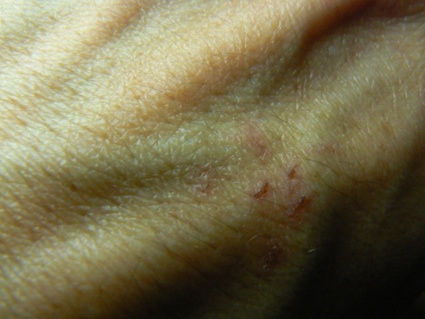 Pain Registers (two days after two minutes firefox activity)
Pain Registers (two days after two minutes firefox activity)
The work in the FIELDS exhibition is called Sketches for an earth computer’, does it mean that this is just the beginning, that you are going to push the project further?
Sketches forms the background of a range of works and performances over the years and definitely the central idea of an earth computer or earth interpreter (in the software sense) will be pushed further. I’m interested now in looking at how software processes coded by the earth instead of being simply observed can equally re-code or impact on the earth. Parallels could be established with certain mining practices and I’ve recently explored these possibilities with Jonathan Kemp during our Stack, Frame, Heap residency in Lueneburg which also aimed to see how this exploration can mesh with historical land art, or large-scale alterations to the landscape.
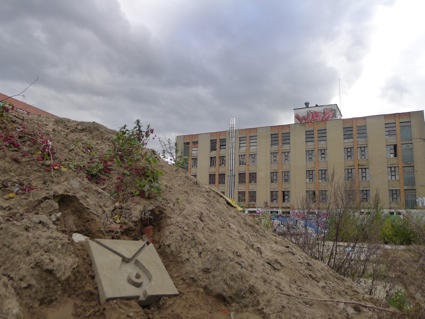 Stack, Frame, Heap (in collaboration with Jonathan Kemp.) Image courtesy of Martin Howse
Stack, Frame, Heap (in collaboration with Jonathan Kemp.) Image courtesy of Martin Howse
Thanks Martin!
Check out Sketches for an Earth Computer at the Fields exhibition, produced by RIXC and curated by Raitis Smits, Rasa Smite and Armin Medosch. The show remains open at Arsenals Exhibition Hall of the Latvian National Arts Museum (LNAM) in Riga until August 3, 2014.
Other posts about the Fields exhibition: Ghostradio, the device that produces real random numbers, On the interplay between a snail and an algorithm and FIELDS, positive visions for the future.

